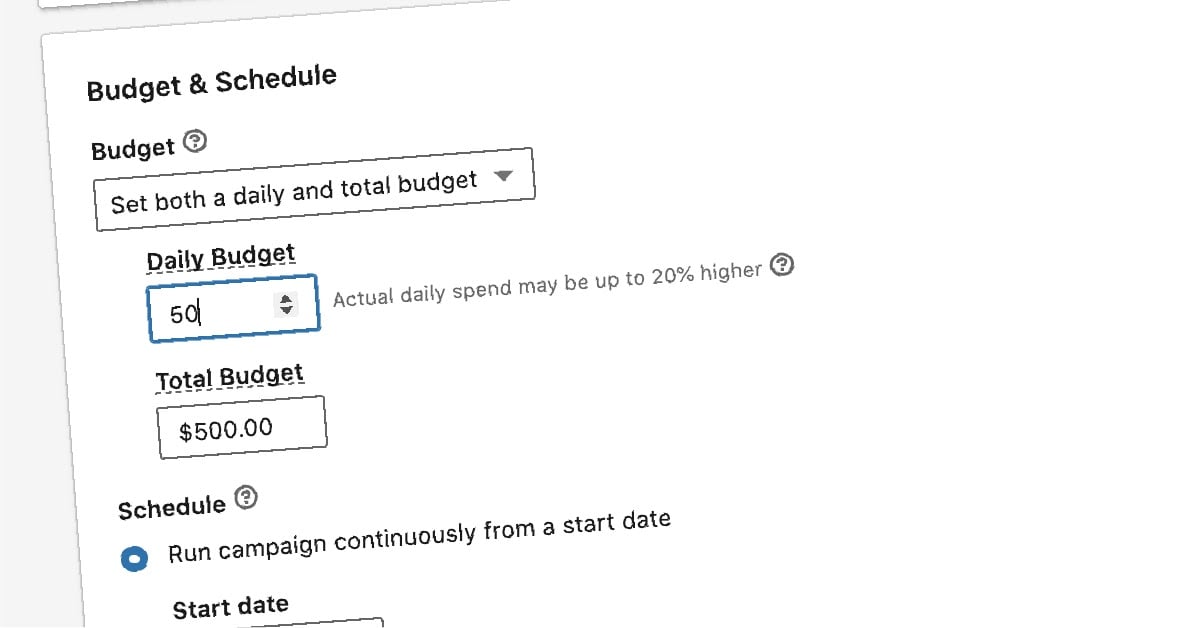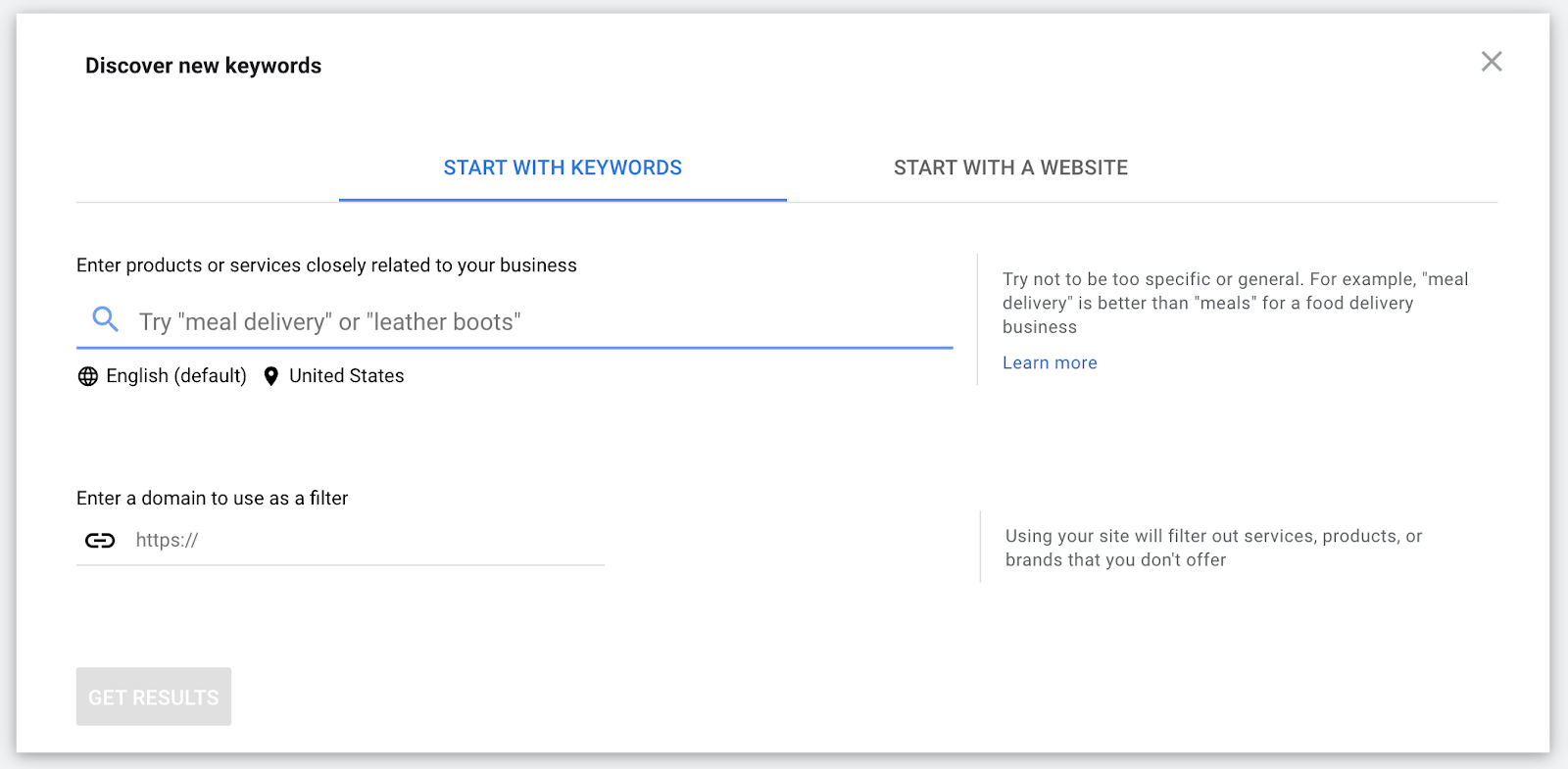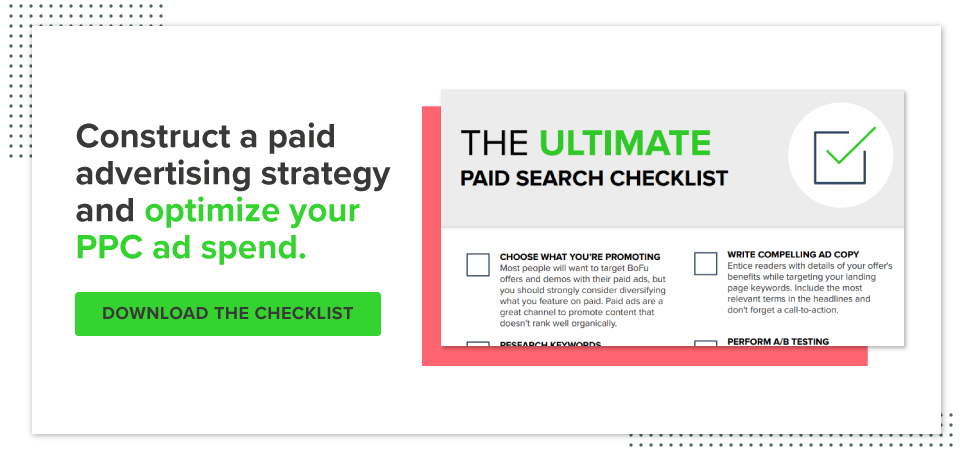How To Create a Paid Search Budget

When it comes to paid advertising, you want to be able to generate as much return on your investment as possible. In order to measure your returns, you need a starting point — you need a budget.
Before you can set a budget for your paid advertising, you need to have a firm grip on your business goals. What are your sales targets? How many leads, demos or downloads do you need to generate to reach those sales targets? How many are you already generating? From there, you can determine what your paid advertising needs to do to bridge that gap.
After you’ve established your goals and determined what you want your paid advertising to contribute to your growth, there are a number of approaches you can take to set your budget.
How To Set Your Paid Budget
Benchmark method
The benchmark method is the most common approach to setting your paid budget. Essentially, you determine your budget based on the number of leads you need to generate and the industry-standard cost of generating leads. Determining the number of leads, demos or downloads you need to meet your sales goal ultimately informs what your budget will be.
After working with over 40 B2B advertising accounts last year, we know that the average cost per lead generated from paid advertising was roughly $150. Multiplying that industry benchmark by your conversion target will give you a starting point for your budget.
For example, if you need to generate 50 conversions to reach your sales goals, you can determine your budget by multiplying $150 by 50, giving you a budget of $7,500.

This number is just a starting point, though. To refine your budget, you can analyze the keywords you plan to target. If it takes a certain number of clicks to generate a lead, then a more expensive keyword will ultimately result in a higher cost per lead. For example, if your keyword’s cost per click is higher than $4, you may have to budget more than you would for a keyword that only costs $3.
The benchmark method also works well for paid social media campaigns. In fact, both LinkedIn and Facebook advertising platforms feature projections of what you can expect to generate in terms of impressions, clicks and leads based on the budget you have set, which allows you to adjust based on your goals.
Keyword Method
Alternatively, you can utilize the keyword method, which bases your budget on the maximum you can expect to spend on a given keyword. Google Keyword Planner (available through your Google Ads account) can project what you can expect to spend on a particular keyword based on benchmark conversion rates across their users.
The projections provided by Google Keyword Planner will provide you with insight on what you should expect to spend on a given keyword to generate a certain number of leads. Like the benchmark method, this should serve a starting point for your budget — your advertising spend will need to adapt over time.

Additionally, it’s important to note that there is a diminishing level of returns when it comes to keywords. Even when ads are performing at their best, it is difficult to exceed a 75% share of impressions or click-through rates higher than 5%. You should be mindful of whether additional spending can truly increase results or if that money could be used to improve other campaigns or areas of your marketing.
Competitor Method
The third and final method we recommend for setting your budget is to base your budget on what your competitors are doing. Perhaps the simplest approach, you can utilize third-party tools such as SEMrush to analyze what your competitors are spending and which keywords they’re focusing on.
With this information, you can simply allocate the necessary budget to outbid them on those keywords. While this can be an easy and quick approach to setting your paid budget, it might not be the most effective.
As we pointed out, it’s important to research keywords you intend to target. While your competitors are fighting for the same space, there may be other effective keywords you could be targeting. Additionally, what’s working for your competitors may not work for you, making your planning and goal setting in the beginning that much more important.
Managing Your Budget
Regardless of the method you choose to set your budget, it is likely just a starting point. You should be tracking your spending and adjusting as necessary to generate the highest return on investment possible. With that said, here are some best practices for managing your paid budget:
- Limit your keywords: Try not to have too many keywords in any particular campaign, as your budget will only allocate to the highest performers rather than be distributed equally. Instead, spread keywords out among multiple campaigns.
- Focus on high conversion rates: Over time, allocate your budget to keywords with the highest conversion rate or the lowest cost per lead. To take it a step further, find out which keywords are generating the highest quality leads.
- Keep an eye on your daily spend: Make sure your daily spending matches the monthly allocation you’ve set. Occasionally, ad managers can overspend on a given day and these anomalies should be addressed.
As you gather data and results from your paid campaigns, you will be able to better determine when you should increase or decrease your budget. If certain campaigns are going better than others, you can decrease your spending on underperformers. Alternatively, if you’re generating significant returns from your paid advertising, it may be worth scaling up your budget to generate even more leads.
Takeaway
Setting a budget for paid advertising can seem daunting, but it doesn’t have to be. So long as you have a firm grip on your goals and expectations for what you expect to generate from your campaigns, industry benchmarks make setting a baseline budget very simple. Regardless of how you determine your spending, these methods should serve as a starting point and adapt over time.
You should stay on top of your budget and adapt over time as you collect data from your paid efforts. By adjusting your budget over time, you can ensure that you are generating the highest return on investment possible.
Chris Singlemann
Chris is a Brand Marketer at New Breed where he is responsible for crafting design and video assets that support our brand. When he's not behind the camera, he enjoys kayaking and tending to his sourdough starter.





